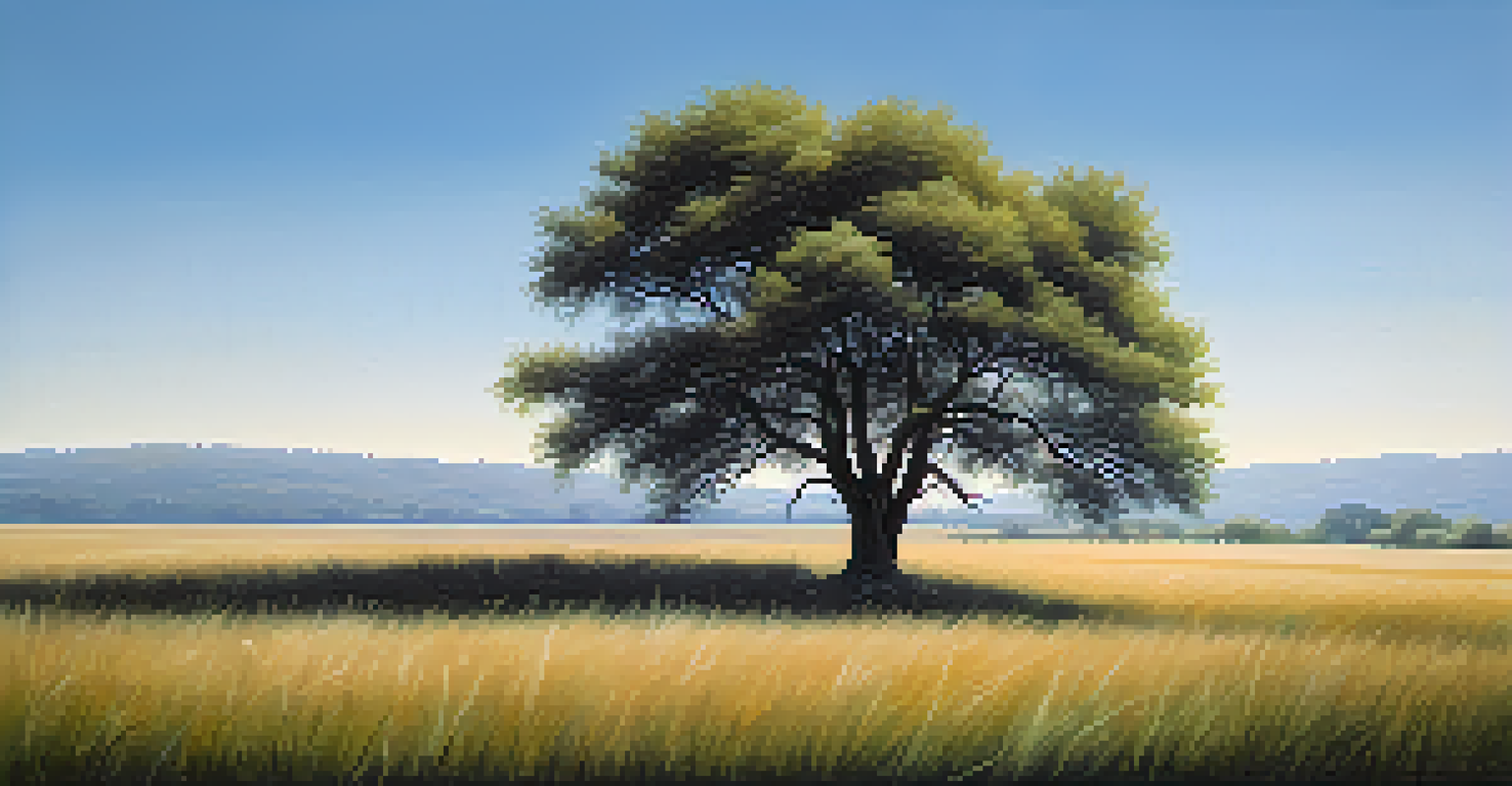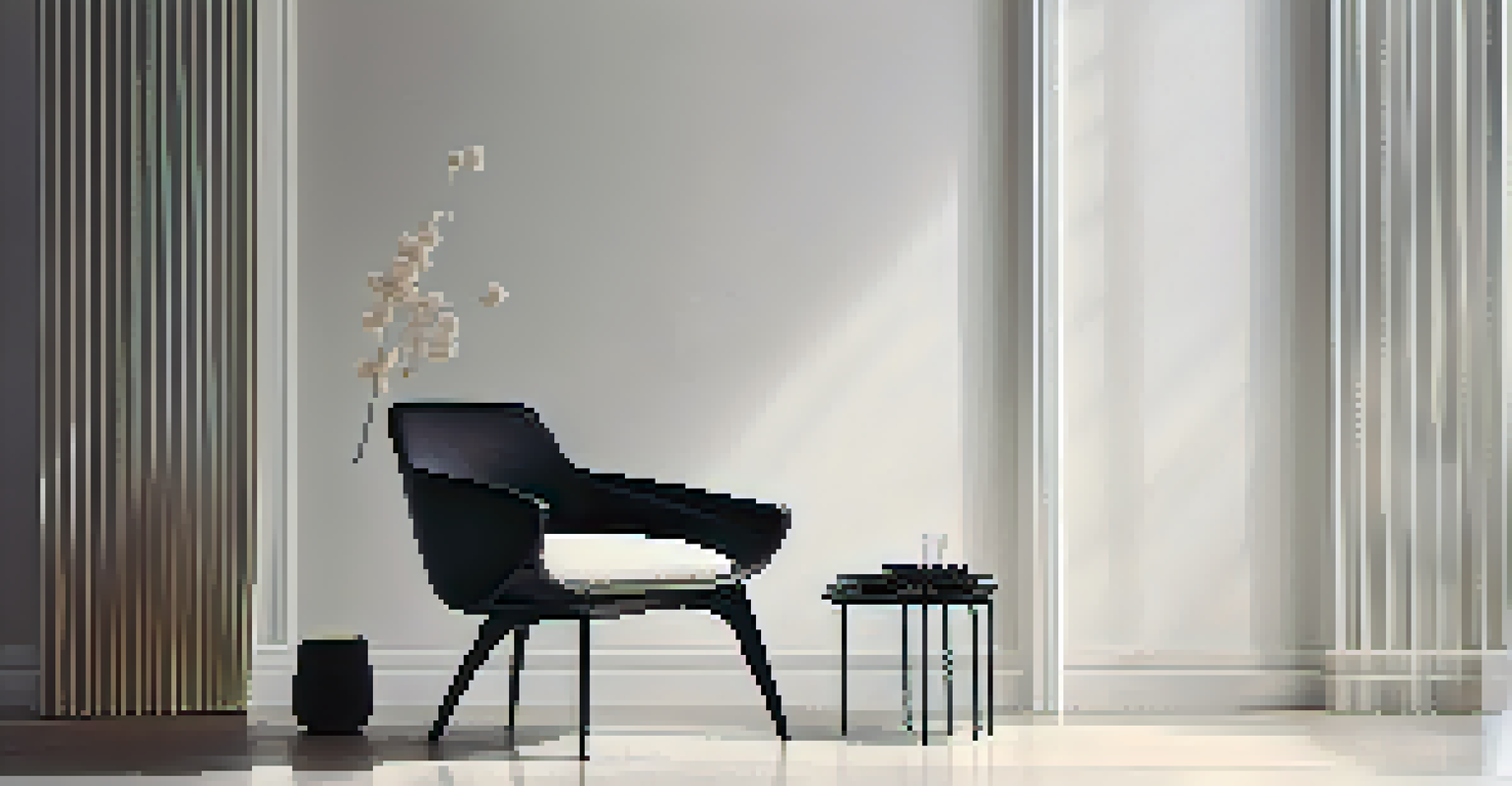Exploring Minimalism in Photography: Less Is More Approach

Understanding Minimalism in Photography
At its core, minimalism is about stripping away the excess to focus on what truly matters. In photography, this means capturing images that emphasize simplicity and clarity. The idea is to remove distractions and highlight the essence of the subject, whether it be a landscape, portrait, or object.
Simplicity is the ultimate sophistication.
Think of minimalism as a blank canvas—a space where every element has a purpose. In a world filled with visual noise, minimalism allows photographers to present their subjects in a more impactful way. This approach encourages viewers to engage with the image on a deeper level, appreciating the finer details that might otherwise go unnoticed.
By embracing minimalism, photographers can create stunning visuals that evoke strong emotions. The less-is-more philosophy not only simplifies the composition but also fosters creativity, opening doors to new perspectives and interpretations of ordinary scenes.
The Aesthetic Appeal of Minimalism
Minimalism in photography often results in striking and memorable images. The use of negative space, for instance, draws attention to the subject and creates a sense of balance and harmony. This aesthetic appeal can make even the simplest objects look beautiful and intriguing.

Consider a photograph of a single leaf against a stark white background. The absence of clutter allows the viewer to appreciate the leaf's texture and shape. Such compositions invite contemplation, encouraging viewers to linger a moment longer and absorb the details.
Emphasizing Simplicity in Photos
Minimalism in photography focuses on stripping away distractions to highlight the essence of the subject.
Moreover, minimalism can evoke a sense of calmness and tranquility. In a fast-paced world, these serene images provide a visual retreat, reminding us of the beauty found in simplicity.
Essential Techniques for Minimalist Photography
To achieve a minimalist look, one of the key techniques is to focus on composition. This involves carefully selecting the main subject and eliminating any unnecessary elements around it. Photographers often use techniques like the rule of thirds or leading lines to guide the viewer's eye directly to the focal point.
Less is more.
Lighting plays a crucial role as well. Soft, natural light can enhance the simplicity of a scene, creating gentle shadows and highlights that add depth without overwhelming the viewer. Experimenting with different times of day can yield striking minimalist results.
Lastly, post-processing can help refine the minimalist aesthetic. Adjusting contrast and brightness can emphasize the subject, while removing distractions can streamline the overall composition. This final touch can elevate a good photo to a stunning one.
Choosing the Right Subjects for Minimalism
Not every subject is suited for minimalist photography. Ideally, you want to choose subjects that have clear shapes or interesting textures, which can stand out on their own. Common minimalist subjects include architecture, nature, and everyday objects that can be isolated in a compelling way.
For instance, photographing a solitary tree in a vast field can create a powerful image, showcasing the beauty of isolation. Similarly, an empty street lined with unique architectural features can highlight the charm of urban minimalism.
The Power of Negative Space
Effective use of negative space helps draw attention to the focal point, creating balance and enhancing visual impact.
It's also helpful to consider color and contrast. Bold colors can add visual interest to minimalist compositions, while monochromatic schemes can evoke a sense of sophistication. Ultimately, the key is to find subjects that resonate with the minimalist ethos of simplicity and clarity.
The Role of Negative Space in Minimalism
Negative space is a fundamental concept in minimalist photography. It refers to the empty space surrounding your subject, which can be just as important as the subject itself. Effective use of negative space helps to draw attention to the focal point and creates a sense of balance within the composition.
Imagine a photograph of a single flower in a vast expanse of white. The flower—the subject—is emphasized by the surrounding emptiness, making it stand out even more. This technique not only enhances the visual impact but also evokes emotions of solitude and contemplation.
When working with negative space, it's essential to consider the overall composition carefully. The goal is to create harmony between the subject and its surroundings, allowing the viewer to appreciate both the subject and the space that complements it.
Exploring Minimalism Through Different Genres
Minimalism can be applied across various photography genres, including portrait, landscape, and product photography. In portrait photography, for example, a simple backdrop and soft lighting can help focus the viewer's attention on the subject's expressions and emotions.
In landscape photography, capturing wide-open spaces with few elements can evoke a sense of vastness and freedom. Think of a serene beach scene with just a single rock or a distant mountain peak against an expansive sky—these images resonate with the minimalist philosophy.
Minimalism Across Photography Genres
Minimalism can be applied to various photography genres, allowing the subject to shine through intentional composition and simplicity.
Product photography also benefits from minimalism, as it allows the product to shine without distractions. Clean lines, simple backgrounds, and well-thought-out lighting can create stunning visuals that effectively showcase the product's features.
Embracing Minimalism as a Mindset
Adopting a minimalist approach in photography is not just about the images themselves; it's also a mindset. Embracing minimalism encourages photographers to slow down and be more intentional about their choices. It invites a deeper connection with the subjects and the environment.
This mindset can lead to more meaningful photography experiences, allowing photographers to capture moments that truly resonate with them. By focusing on fewer elements, photographers can develop a stronger narrative and convey emotions more effectively.

Ultimately, minimalism is about finding beauty in simplicity, both behind the lens and in life. As photographers explore this approach, they may also discover a newfound appreciation for the world around them, transforming the way they see and capture it.